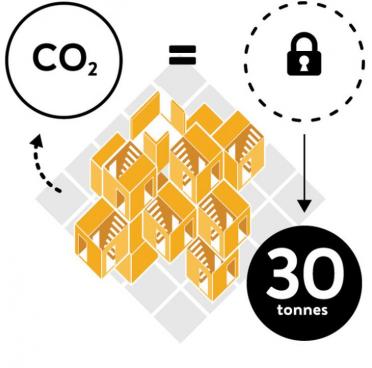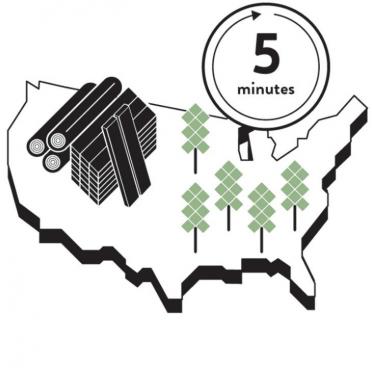CARBON FOOTPRINT
MultiPly is carbon neutral. Carbon emissions of 68 metric tonnes (MT) CO2 eq. are offset by 38 MT CO2 eq. due to burning of wood offcuts produced during manufacturing (which substitute for fossil fuel) and 30 MT CO2 eq. of carbon stored in the wood in the finished installation.

A RENEWABLE RESOURCE
Tulipwood, which makes up nearly 98% of the mass of Multiply, is one of the most abundant American hardwoods with forest volume of over 1000 million m3, 7% of the total U.S. hardwood resource.
Tulipwood is under-utilised from a forestry perspective. The creation of larger markets for this timber would reduce pressure on other less abundant commercial hardwood species and enhance financial returns from sustainable management of diverse semi-natural forests.
The volume of tulipwood standing in U.S. hardwood forests expands by 19 million m3 every year. It takes only 5 minutes for the 320 cubic meters of tulipwood logs harvested to manufacture MultiPly to be replaced by new growth in the U.S. forest.

FUTURE USE AND LEGACY
MultiPly demonstrates the technical and environmental potential of a new construction product - hardwood CLT. This potential, and the message MultiPly sends out, may be more relevant than the immediate - and more readily quantifiable - environmental impact of MultiPly at the times and places it is on display.
Equally significant is that MultiPly is fully demountable and can be flat-packed into its component kit of parts and put back together in several different configurations. Long life in use significantly mitigates the environmental effects of the design. Less regular replacement means less repetition of impacts. Long-lived wood products also supplement the carbon store in the forest and help to keep CO2 out of the atmosphere.
The use of tulipwood, largely untarnished by mixing with other materials and chemicals, ensures that at the end of MultiPly’s life, the panels are readily reusable and recyclable and any components needing to be disposed of are biodegradable and non-toxic. They may also be safely incinerated, providing a carbon-neutral source of energy

